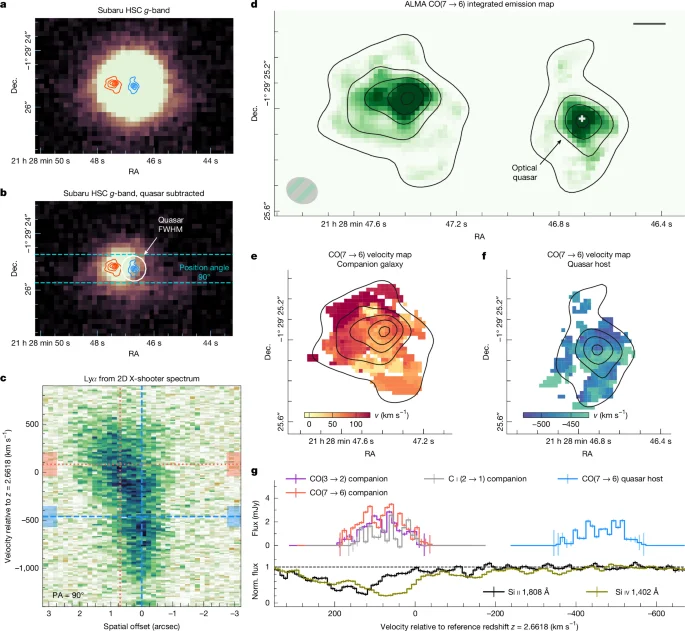
Cosmic Joust: Galaxy Merger Triggers Quasar Blast, Stuns Astronomers
A galactic collision 11 billion light-years away is giving astronomers a unique view of cosmic violence. Scientists have observed two galaxies engaged in a dramatic interaction, with one unleashing a powerful beam of radiation from a quasar directly into its neighbor. This "cosmic joust," as researchers call it, sheds light on how quasars can influence galaxy evolution and star formation.
The Atacama Large Millimeter/submillimeter Array (ALMA) and the European Southern Observatory’s (ESO) Very Large Telescope (VLT) captured this stunning event, revealing that the galaxies are moving towards each other at over 311 miles per second. This intense interaction occurred when the universe was only about 18% of its current age, offering insights into the universe's early development.

"We discovered a quasar—likely triggered by the merging of two galaxies—that is actively transforming the gas structure in its companion galaxy," explains Pasquier Noterdaeme, a CNRS researcher at the Institut d’Astrophysique de Paris.
A quasar is an incredibly bright region powered by a supermassive black hole. In this case, the quasar emits a concentrated beam of radiation that pierces through the neighboring galaxy, disrupting the gas clouds needed for star formation. This effectively sabotages the galaxy's ability to create new stars.
"We see for the first time the effect of a quasar’s radiation directly on the internal structure of the gas in an otherwise regular galaxy," said Sergei Balashev, researcher at the Ioffe Institute in Russia.
The interaction is not one-sided. As the galaxies interact, gas is funneled toward the central black hole of the quasar-hosting galaxy, fueling it and causing it to release even more energetic radiation. This creates a feedback loop, intensifying the impact on the surrounding environment. The scientists are calling it the "cosmic joust"
ALMA's high-resolution imaging allowed astronomers to distinguish the two galaxies, previously seen as a single object. The ESO’s X-shooter instrument helped analyze the quasar’s light, revealing how its radiation influences its neighbor.

The quasar's radiation effectively sterilizes the galaxy by clumping the gas in super tiny, dense pockets, rendering it useless for star births. This suggests the quasar's energy can be a weapon of mass destruction.
This discovery provides crucial insights into how quasars shape their host galaxies and affect their cosmic neighbors. Future instruments, like the Extremely Large Telescope (ELT), promise to reveal even more about these galactic interactions. The researchers suggest these mergers bring huge amounts of gas to supermassive black holes residing in galaxy centers.
What other secrets do these cosmic collisions hold? How will future observations refine our understanding of galaxy evolution? Leave your comments and share your thoughts below.